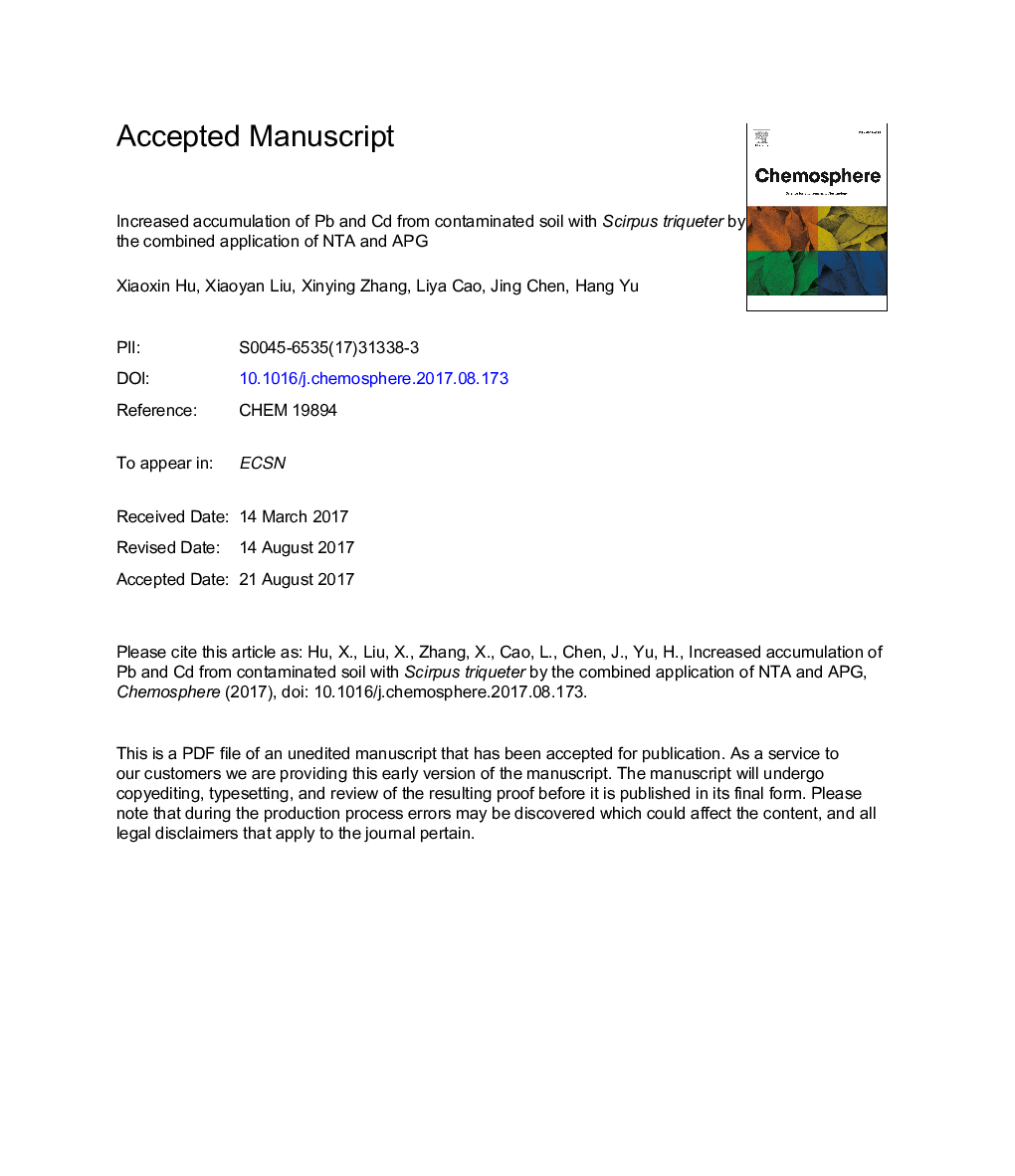| Article ID | Journal | Published Year | Pages | File Type |
|---|---|---|---|---|
| 8852981 | Chemosphere | 2017 | 27 Pages |
Abstract
Phytoremediation of heavy metals contaminated soils shows many advantages and it can be improved by adding chelating agents and surfactants. In this study, pot culture experiments were set up to explore the effect of alone application of nitrilotriacetic acid (NTA) and combined application of NTA and alkyl polyglucoside (APG) on changes in absorption and adsorption of heavy metals by root of Scirpus triqueter and bioaccumulation of metals in single or co-contamination. Different additives were added into the soils artificially after 10 d and heavy metals extracted from different plant tissues were analyzed after 60 d. Results showed that more cadmium (Cd) was adsorbed on the root surface while more lead (Pb) was absorbed in root interior with the combined application of NTA and APG during phytoremediation of single contaminated soil. In co-contaminated soils, such a combined application not only strengthened the plant growth, but also promoted accumulation of Pb and Cd by Scirpus triqueter. NTA improved absorption amounts of Pb (9.7-fold) and Cd (1.0-fold) in root interior significantly. APG induced more metals to gather on the root surface in the presence of NTA and the adsorption amounts of Pb and Cd ranged from 26.2 and 17.7 mg kgâ1 to 412 and 46.0 mg kgâ1 respectively. Besides, the coexistence metal increased bioaccumulation of another metal under combined application of NTA and APG in co-contamination of Pb and Cd. In conclusion, the combined application of NTA and APG would be beneficial to accumulate Pb and Cd from contaminated soils by Scirpus triqueter.
Related Topics
Life Sciences
Environmental Science
Environmental Chemistry
Authors
Xiaoxin Hu, Xiaoyan Liu, Xinying Zhang, Liya Cao, Jing Chen, Hang Yu,
